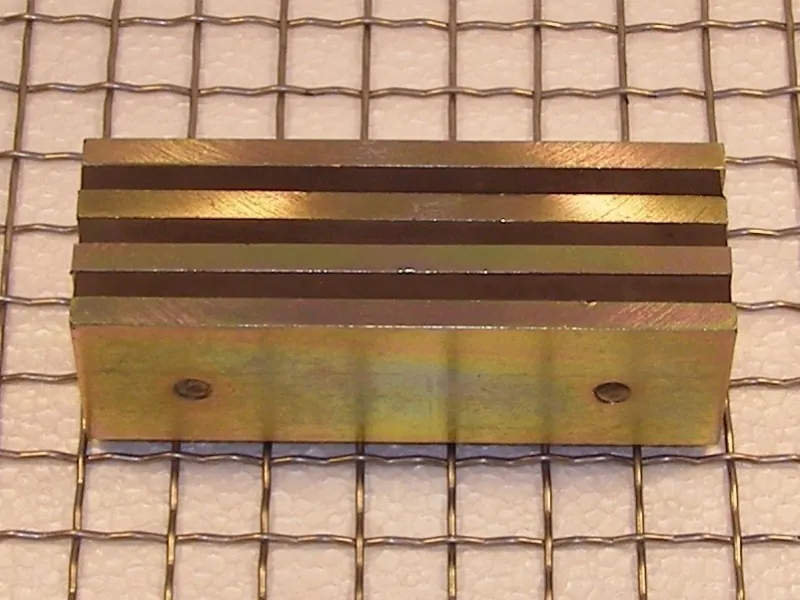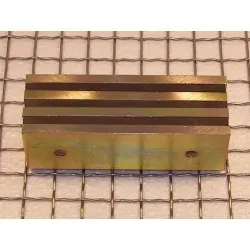- Out-of-Stock



The maximum pull force: ~300 [kg]
Magnetic holding rail is used for secure of molds on vibro-tables during production of concrete elements.
The pull force given refers to hoisting capacity measured in optimal conditions, by using as a backing plate a sheet made of low-carbon steel, 10 [mm] thick, of smooth surface and with the force acting perpendicularly, in room temperature.
Notice: the pull force given should be treated as only a comparative value. An actual pull force depends on the following factors:
We generally recommend individual checking of the holding rail in any specific working conditions.
Weight of the holding magnet: ~2,1 [kg]
The maximum pull force: ~300 [kg]
Magnetic holding rail is used for secure of molds on vibro-tables during production of concrete elements.
The pull force given refers to hoisting capacity measured in optimal conditions, by using as a backing plate a sheet made of low-carbon steel, 10 [mm] thick, of smooth surface and with the force acting perpendicularly, in room temperature.
Notice: the pull force given should be treated as only a comparative value. An actual pull force depends on the following factors:
We generally recommend individual checking of the holding rail in any specific working conditions.
Weight of the holding magnet: ~2,1 [kg]